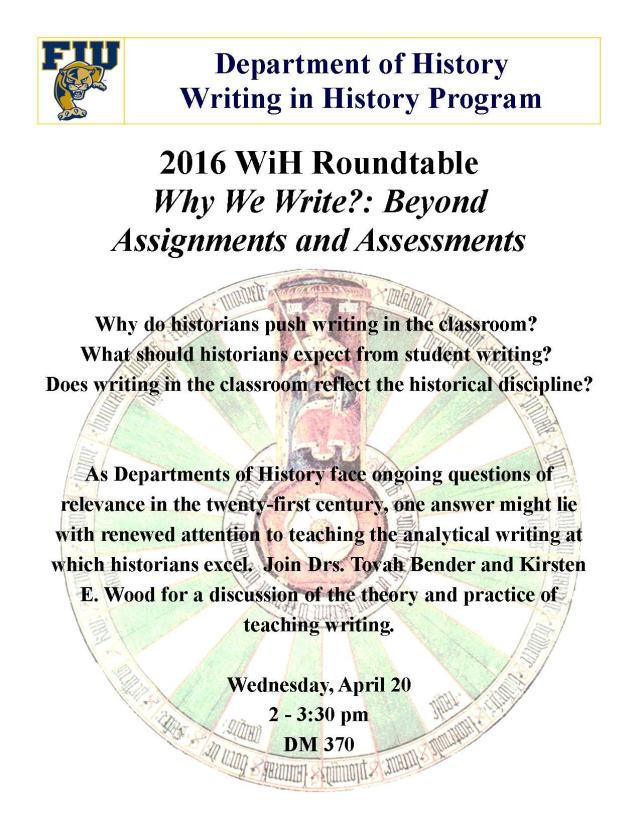
Author: pferd001
March History Journal Club Annoucement
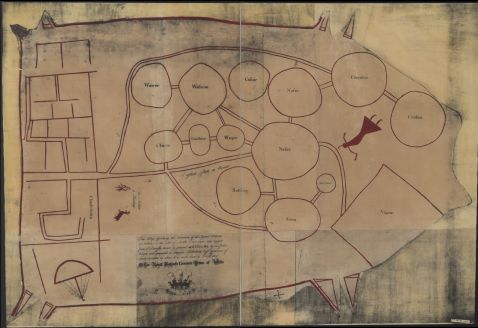
Map of the Several Nations of Indians to the Northwest of South Carolina, ca. 1721
The next meeting of the History Journal Club will be held on Wednesday, March 9 at 2 pm in DM 370. For the March meeting, we will focus on finding and interpreting primary sources beyond written documents. For example, maps, archaeological data, and oral histories add much to historical study. To help us springboard into that discussion, the March article is Ian Chambers, “A Cherokee Origin for the ‘Catawba’ Deerskin Map (c. 1721).” Chambers uses a variety of contextual clues to argue that a Cherokee individual, rather than a Catawba, drew the above map. Such contemporary maps, drawn by both Native Americans and Europeans in the Americas, are full of historical significance and can be used to bolster or challenge conclusions from written documents.
Best, Dr. Ferdinando
Friday Funnies: Stuck

Writing is a long process and sometimes you can get stuck with the terrible affliction known as writer’s block. If you are so stuck, then you might need to walk away from the computer, perhaps grab a drink or walk around, and then come back. You also can make an appointment with a Writing in History tutor, who can help you get back to work. They are available Monday through Friday, usually 9am to 5pm. Learn more and make an appointment on our website.
Best, Dr. Ferdinando
Website Wednesdays: How to Read a Book
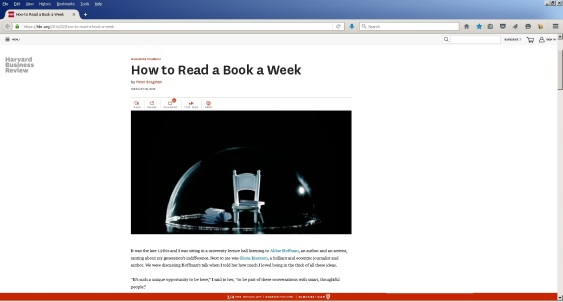
One important way to develop your writing is to read. In a college history class you will, of course, do quite a bit of reading. Trying to balance that reading with all your other commitments can be tough, but there are skills to learn that will help. It is important, for instance, not to treat all college reading as if it is a novel. You may not have to read an assigned history monograph word-for-word and cover-to-cover to understand its contribution. For example, an article in the Harvard Business Review on How to Read a Book a Week outlines a five-step process to understand a book, even if you do not read every word. In this article, Peter Bregman suggests that you “start with the author” and learn a little about them, and then “read the title, the subtitle, the front flap, and the table of contents” to figure out the overall scope of the book. Next you “read the introduction and the conclusion” to focus in on the author’s main argument, and next “read/skim each chapter” to examine how they support the argument. Finally, Bregman recommends that you should “end with the table of contents again” to make sure you have summarize the major points of the book.
Best, Dr. Ferdinando
Website Wednesdays: Clichés

Clichés are best avoided in academic writing. They are unclear, not specific, and generally can lead to reader confusion. Clichés often only have very general meanings, if indeed they mean anything, and thus do not help support your paper’s argument with any specificity. If, for example, you are describing historic trends in the consumption of various meats, you do not want to say “from the beginning of time people have always eaten meat.” All this phrase does is leave open questions about when, and what meat and people. Rather, you should state the time period, a particular century perhaps, and include the meats and people under study. Thus, a more specific sentence is “US consumption of red meat decreased over the last three decades of the twentieth century, with a correlated increase in poultry evident.” Then, of course, you could analyze potential historical factors leading to these changes.
To learn more about clichés and how to avoid, visit The University of North Carolina at Chapel Hill Writing Center: Clichés. Finally, remember to avoid clichés like the plague.
Best, Dr. Ferdinando
Friday Funnies: Revisions
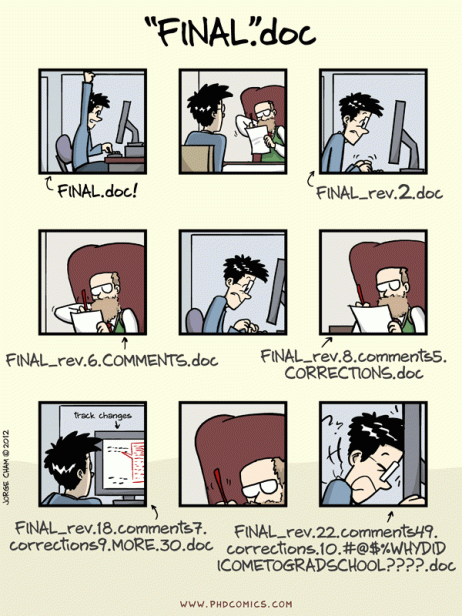
The spring 2016 Writing in History motto is “Beyond One and Done.” Far too often, we treat our first finished draft as our one “final” draft. Rather, we should treat that first “final” draft as nothing but a pencil sketch, showing the lines and contours of our work. Put that draft aside for a few days. Come back to it, read through it again, and make edits that add a wisp of color between those lines. Then, after feedback from friends, colleagues, tutors, and the professor’s dreaded red pen, make more edits and thus add splashes of paint. Finally, after reading over the paper again, do not forgot to run spellcheck one last time. You would be surprised how many papers are turned in with spelling and grammar errors that spellcheck will catch.
Do you want help with coloring in the lines of your paper? You can make an appointment with a Writing in History tutor. They are available Monday through Friday, usually 9am to 5pm. Learn more and make an appointment on our website.
Best, Dr. Ferdinando
Website Wednesdays: Numbers
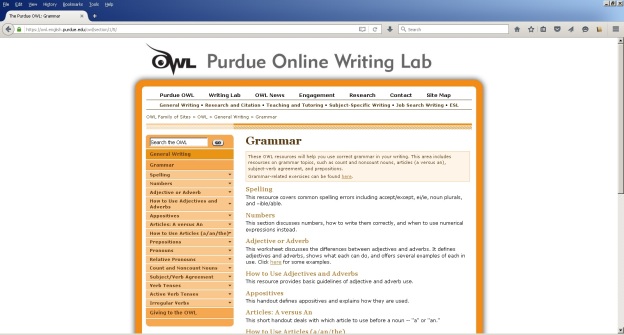
One of the best online resources for writing is Purdue University’s Online Writing Lab (OWL). The grammar section of the OWL covers a number of common issues, including common spelling errors,the difference between adjectives and adverbs, and the proper use of numbers. As historians, we deal with dates quite a bit. So, one important thing to remember is that any number that starts a sentence should be spelled out. For example, it is fine to say “Thomas Jefferson was born in 1743,” but not “1743 was a momentous year, because of Thomas Jefferson’s birth.” Rather, “Seventeen forty-three was a momentous year…” is the correct form.
Best, Dr. Ferdinando
Phi Alpha Theta: Map Fair
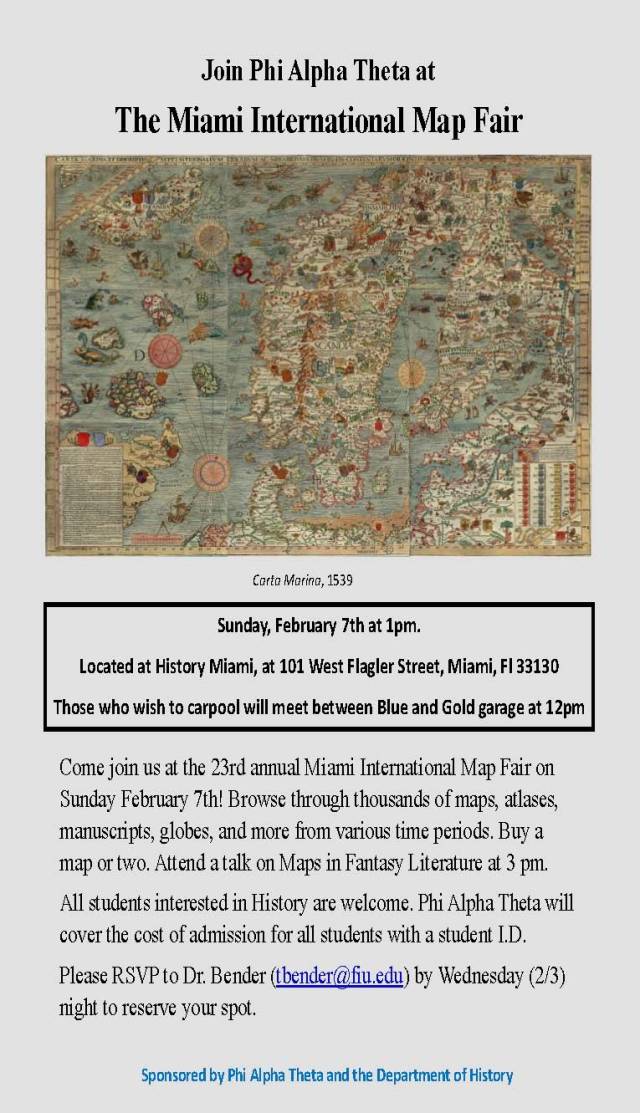
Commas, Lists, and “FANBOYS”

Commas are a vital part of sentence construction. They help your reader figure out what parts of a sentence go together, and what parts are separate. For today’s blog entry I decided to forgo the more famous image highlighting grandma cannibalism. Instead, in the above image, two commas are missing, leading to the consumption of both family and pets. When listing several things, commas help separate those items: “I like cooking, my family, and pets.” The use of commas in a list is relatively straight forward, but commas have many other uses.
For help with these various comma usages, check out the University of North Carolina at Chapel Hill’s handy Commas Handout. They highlight several important comma myths, including that long sentences need commas, and that a comma should go everywhere you pause when speaking. They also encourage the use of a mnemonic device called “FANBOYS.” “FANBOYS” stands for conjunctions: for, and, nor, but, or, yet, and so. These words help connect parts of a sentence, and when they are connecting two independent clauses, you need a comma.
Still worried about your commas, or perhaps you remain beguiled by grammar? You can make an appointment with a Writing in History tutor. They are available Monday through Friday, usually 9am to 5pm. Learn more and make an appointment on our website.
Best, Dr. Ferdinando
Writing in History Spring 2016 Motto: “Beyond One and Done”
The spring 2016 Writing in History motto is “Beyond One and Done.” Far too often we treat writing as a single straight-line journey from blank page to finished paper. College professors often inadvertently reinforce this view by assigning a paper, giving a grade, and then moving on without requiring students to rework the assignment based on feedback. Students get used to not revisiting their written work, and thus they do not learn the crucial skill of applying feedback to their work and also appreciating that even critical comments are vital to developing and improving their writing. In actuality, writing is a process of many paths involving not just getting words down on the page, but editing, revising, deleting, re-writing, and numerous drafts both before and after copious feedback. It is that feedback that is crucial to crafting a final version of a paper. No author can write one draft and be done. Rather, we should all move “Beyond One and Done” and embrace multiple drafts with feedback as part of our writing process.
Best, Dr. Ferdinando